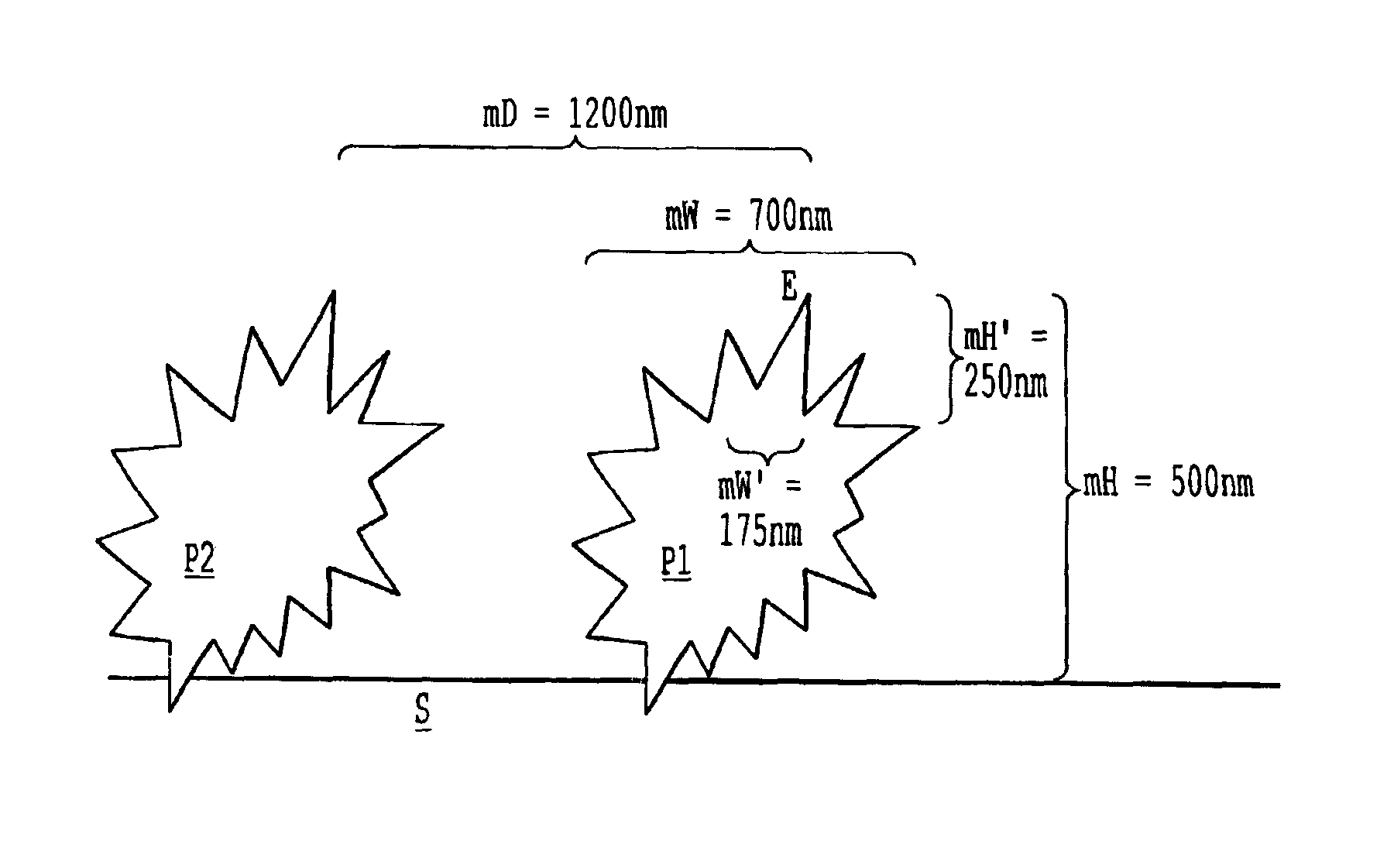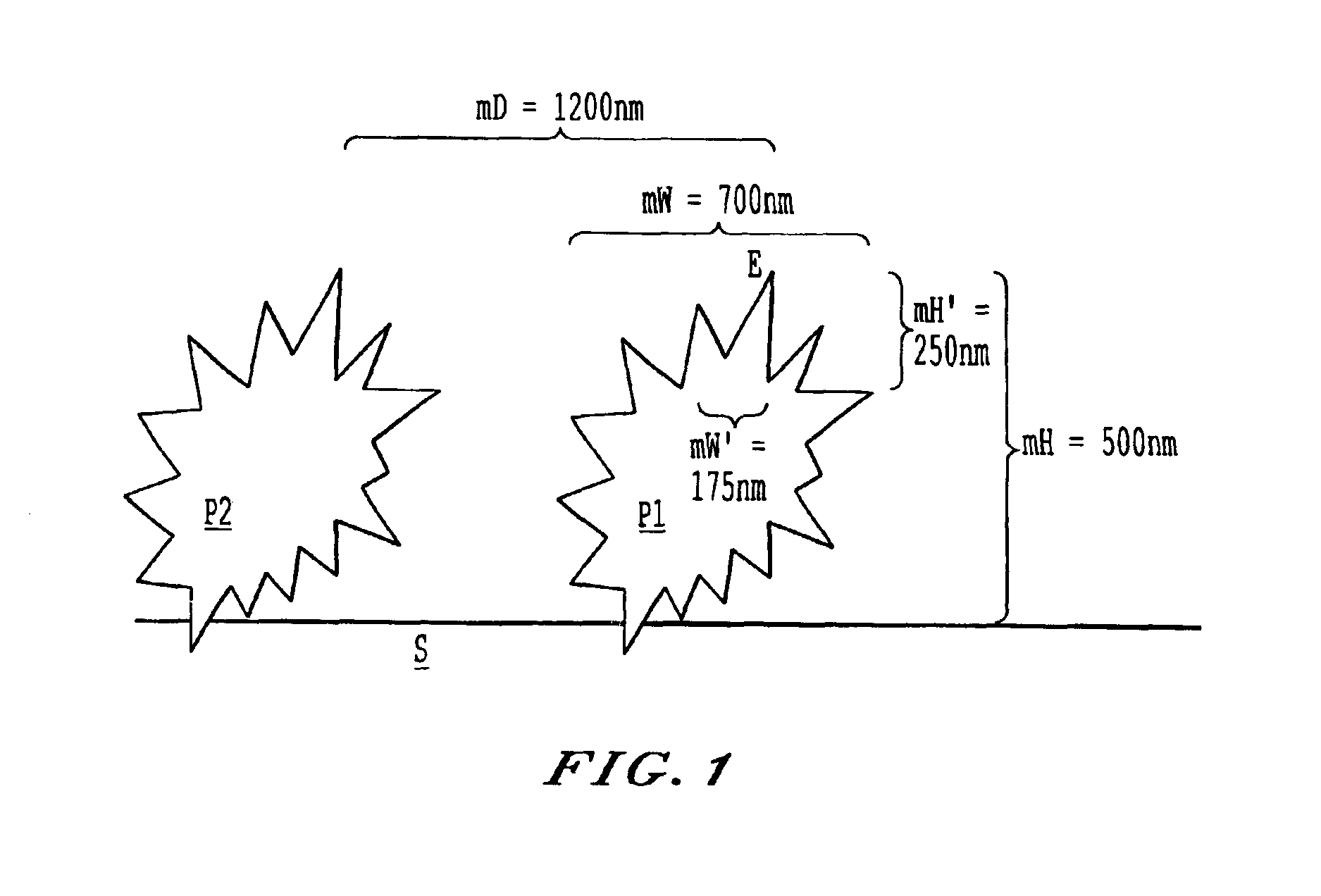Surfaces rendered self-cleaning by hydrophobic structures, and process for their production
a technology of hydrophobic structure and surface, applied in the field of self-cleaning surfaces, can solve the problems of poor wetting, lack of stability of self-cleaning surfaces, time-consuming and expensive cleaning of surfaces, etc., and achieve the effect of simple process and particularly effective self-cleaning
- Summary
- Abstract
- Description
- Claims
- Application Information
AI Technical Summary
Benefits of technology
Problems solved by technology
Method used
Image
Examples
example 1
A mixture composed of 50% by weight of Aeroperl 90 / 30 from Degussa AG, a spray-dried fumed silica with a BET surface area of 90 m2 / g and 50% by weight of polyamide hot-melt adhesive powder (Vestamelt P06, Degussa AG) with an average particle size below 50 μm is spray-applied electrostatically to a polymethyl methacrylate (PMMA) sheet of thickness 2 mm. To secure the particles to the sheet and produce a fissured structure, the sheet is annealed for 5 min at 108° C. The sheet is then treated with Antispread® (Dr. Tillwich GmbH), a surface-hydrophobicizing agent, making the particles and, respectively, the surface hydrophobic. The surface was first characterized visually and recorded as +++, meaning that there is virtually complete formation of water droplets. The advance angle and receding angle were each measured as greater than 150°. The associated hysteresis is below 10°.
example 2
A powder coating (FREOPOX EKP-7, Emil Frei GmbH & Co.) was doctor-applied cold to give a layer of 200 μm thickness on a nickel plate, and sprinkled with a hydrophobic Aerosil (R 8200, Degussa AG). This mixture and the nickel plate were exposed for 3 minutes to a temperature of 180° C. After cooling, there was only a slight improvement in the run-off behavior of water.
example 3
The experiment of Example 2 was repeated, but a metal roller was used to press the Aerosil R 8200 into the molten surface coating. The material was post-annealed, again for 3 minutes. The run-off behavior of the cooled sheet was only slightly improved over that of the pure powder coating.
PUM
| Property | Measurement | Unit |
|---|---|---|
| size | aaaaa | aaaaa |
| size | aaaaa | aaaaa |
| size | aaaaa | aaaaa |
Abstract
Description
Claims
Application Information
 Login to View More
Login to View More - R&D
- Intellectual Property
- Life Sciences
- Materials
- Tech Scout
- Unparalleled Data Quality
- Higher Quality Content
- 60% Fewer Hallucinations
Browse by: Latest US Patents, China's latest patents, Technical Efficacy Thesaurus, Application Domain, Technology Topic, Popular Technical Reports.
© 2025 PatSnap. All rights reserved.Legal|Privacy policy|Modern Slavery Act Transparency Statement|Sitemap|About US| Contact US: help@patsnap.com


